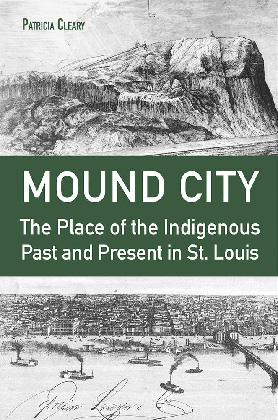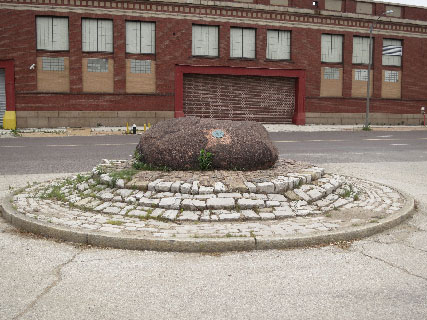Book Review: "Mound City, The Place of Indigenous Past and Present in St. Louis" by Patricia Cleary

The book begins in the present as the author visits a poorly maintained Big Mound historical landmark in an industrial part of St. Louis, near the Mississippi River. Next, we are transported to the past with a description of an elite burial at the Big Mound. In addition to the Big Mound, St. Louis once housed a mound complex, which included nine mounds surrounding a central plaza and several more in a row facing east towards the river, including the Falling Garden and various smaller mounds. This complex served as a satellite of nearby Cahokia, a significant Indigenous city (1050-1350 CE), along with settlements near East St. Louis. The book provides a solid overview of Cahokia, the Mississippian culture, and its influence on North America. After Cahokia was abandoned, a great migration of people occurred. Tribes arrived from the Northeast, with some groups adopting a nomadic lifestyle that followed the buffalo herds, while in other regions, Mississippian-inspired mound cultures persisted until the 1600s. Soon, French traders and clerics from the north arrived, seeking furs to trade and souls to save. The Indigenous Americans were eager to trade and adapt these exotic goods for their own use. At one time, the Indigenous population outnumbered those of European descent and lived in relative harmony; many converted to Christianity and formed families together.
The book highlights the European settlers' willful blindness as the area transforms. Maps of North America depict French, Spanish, and English territories yet omit any representation of native nations or tribes. Subsequently, the discussion regarding the origin of the earthworks seldom acknowledges the people residing there, referring instead to them as “Moundbuilders,” speculated to have been Welsh, the Lost Tribes of Israel, or tribes that have vanished into the distant past. In 1845, the 13th Missouri General Assembly enacted a law prohibiting Native Americans from living in the state.

The book then describes “Boosterism,” in which the white town-fathers use the mounds to promote St. Louis. Local leaders discussed creating parks to celebrate St. Louis's unique earthworks. Slowly, the Big Mound is carved up and finally removed. For me, this part of the book was slow and depressing. I wished the author had gone into less detail since I knew the outcome.
The book is well-researched and contains information I had not encountered elsewhere. Here are two examples: during the New Corn ceremony, native women brought burden baskets of soil to add to the mounds. After the Corps of Discovery, William Lewis settled in St. Louis and became a friend and counselor to the Native Americans. At that time, some tribes called St. Louis “Red-Head” Town because of Lewis. I would have liked more information about St. Louis's other mounds and less emphasis on the Big Mound. If you are interested in St. Louis and Missouri history, this book will enhance your understanding of its roots. It also provides an excellent overview of Cahokia and the Mississippian culture. The book concludes with the purchase of the only remaining earthwork, the Falling Gardens, once celebrated for its beauty by the Osage Nation.
Links to more information
- Youtube: Storytellers' Studio Unearthing St. Louis: Patricia Cleary on the Lost Legacy of Mound City
- Youtube: Left Bank Books Mount City: Patricia Cleary in conversation with Andrew Hurley
- Left Bank Books Publisher of Mound City
Book Details
- Title: "Mound City, The Place of Indigenous Past and Present in St. Louis"
- Author: Patricia Cleary
- Publisher: Left Bank Books
- Publication date: April 18, 2025
- Book length: 462 pages
- ISBN-10: 0826223362
- ISBN-13: 978-0826223364